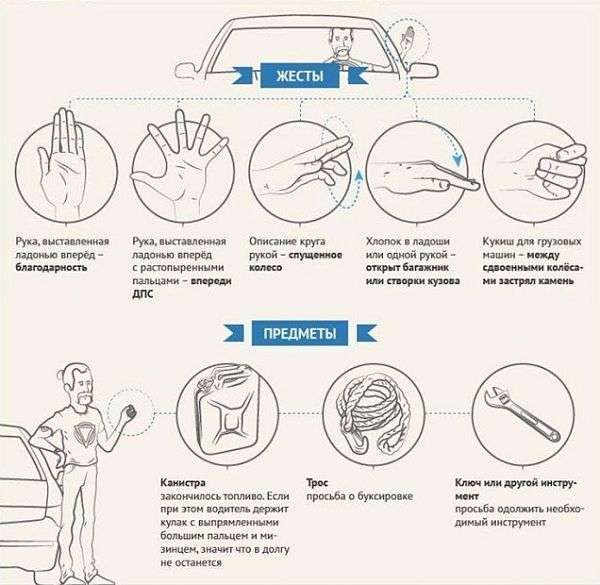
10 technologies and components of modern cars that were invented a long time ago, but were not used
Content
It happens that inventions are poorly introduced into practice. Either contemporaries failed to appreciate them, or society is not ready for their widespread use. There are many similar examples in the automotive industry.

Hybrids
In 1900, Ferdinand Porsche created the first hybrid car, the all-wheel drive Lohner-Porsche.
The design was primitive and did not receive further development then. Only in the late 90s of the 20th century did modern hybrids appear (for example, Toyota Prius).
Keyless start
The ignition key was developed as a way to protect the car from car thieves and has served for many years. However, the presence of the electric starter, invented in 1911, allowed some manufacturers to equip a number of models with keyless starting systems (for example, the Mercedes-Benz 320 of 1938). However, they became widespread only at the turn of the XNUMXth and XNUMXst centuries due to the appearance of chip keys and transponders.
Front wheel drive
In the middle of the 18th century, the French engineer Nicolas Joseph Cunyu built a steam-powered cart. The drive was carried out on a single front wheel.
Again, this idea came to life at the end of the 19th century in the car of the Graf brothers, and then in the 20s of the 20th century (mainly on racing cars, for example Cord L29). There were also attempts to produce "civilian" cars, for example, the German subcompact DKW F1.
Serial production of front-wheel drive cars began in the 30s at Citroen, when the technology for producing cheap and reliable CV joints was invented, and engine power reached a fairly high traction force. The massive use of front-wheel drive has been noted only since the 60s.
Disc Brakes
Disc brakes were patented in 1902, and at the same time they were tried to be installed on the Lanchester Twin Cylinder. The idea did not take root due to heavy pollution on dirt roads, creaking and tight pedals. Brake fluids of that time were not designed for such high operating temperatures. It wasn't until the early 50s that disc brakes became widespread.
Robotic automatic transmission
For the first time, the scheme of a box with two clutches was described in the 30s of the 20th century by Adolf Kegress. True, it is not known whether this design was embodied in metal.
The idea was revived only in the 80s by Porsche racing engineers. But their box turned out to be heavy and unreliable. And only in the second half of the 90s did the serial production of such boxes begin.
Variable speed drive
The variator circuit has been known since the time of Leonardo da Vinci, and attempts to install it on a car took place in the 30s of the 20th century. But for the first time the car was equipped with a V-belt variator in 1958. It was the famous passenger car DAF 600.
It soon became clear that the rubber belt wore out quickly and could not transmit large traction forces. And only in the 80s, after the development of metal V-belts and special oil, variators received a second life.
Seat belts
In 1885, a patent was issued for waist belts that were attached to the body of an airplane with carabiners. The 30-point seat belt was invented in the 2s. In 1948, the American Preston Thomas Tucker planned to equip the Tucker Torpedo car with them, but managed to produce only 51 cars.
The practice of using 2-point seat belts has shown low efficiency, and in some cases - and danger. The revolution was made by the invention of the Swedish engineer Niels Bohlin 3-point belts. Since 1959, their installation has become mandatory for some Volvo models.
Anti-lock braking system
For the first time, the need for such a system was encountered by railway workers, then by aircraft manufacturers. In 1936, Bosch patented the technology for the first automotive ABS. But the lack of necessary electronics did not allow this idea to be put into practice. It was only with the advent of semiconductor technology in the 60s that this problem began to be solved. One of the first models with ABS installed was the 1966 Jensen FF. True, only 320 cars were able to be produced due to the high price.
By the mid-70s, a truly workable system had been developed in Germany, and it began to be installed first as an additional option on executive cars, and since 1978 - on some more affordable Mercedes and BMW models.
Plastic body parts
Despite the presence of predecessors, the first plastic car was the 1 Chevrolet Corvette (C1953). It had a metal frame, a plastic body and an incredibly high price, as it was handmade from fiberglass.
Plastics were used most extensively by East German automakers. It all started in 1955 with the AWZ P70, and then came the Traband era (1957-1991). This car was produced in millions of copies. The hinged elements of the body were plastic, which made the car a little more expensive than a motorcycle with a sidecar.
Convertible with electric roof
In 1934, the 3-seater Peugeot 401 Eclipse appeared on the market - the world's first convertible with an electric hardtop folding mechanism. The design was capricious and expensive, so it did not receive serious development.
This idea came back in the mid-50s. Ford Fairlane 500 Skyliner had a reliable, but very complex folding mechanism. The model was also not particularly successful and lasted 3 years on the market.
And only since the mid-90s of the 20th century, electric folding hardtops have firmly taken their place in the lineup of convertibles.
We considered only some of the technologies and components of cars that were ahead of their time. Undoubtedly, at the moment there are dozens of inventions, the time of which will come in 10, 50, 100 years.

